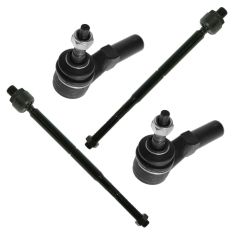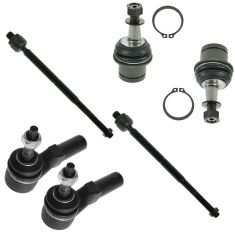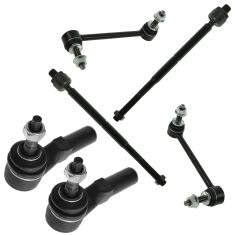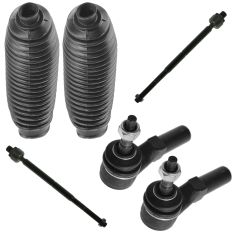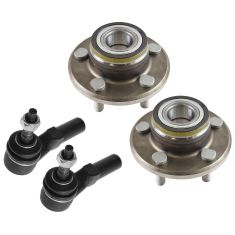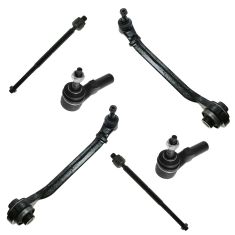1ASFK00222-Dodge Ram Chrysler Mitsubishi Front Driver & Passenger Side Outer 2 Piece Tie Rod Set TRQ PSA54788
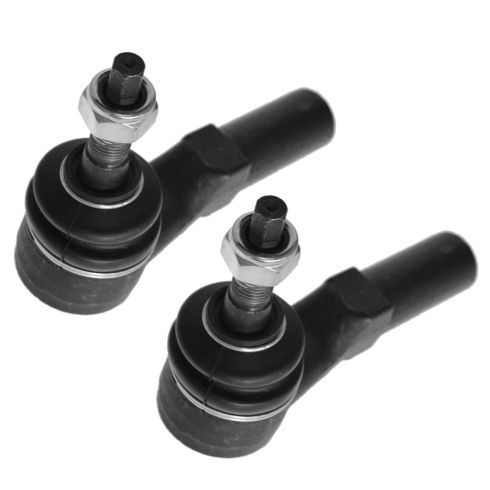
Replaces
2006 Dodge Magnum Rear Wheel Drive Front Driver & Passenger Side Outer 2 Piece Tie Rod Set TRQ PSA54788

Product Reviews
Loading reviews
4.45/ 5.0
11
11 reviews
Satisfied
August 8, 2017
Everything went well, my purchase and delivery went smoothly. Will definitely consider utilizing this method again. Thanks!
Problem Solved
August 22, 2018
I was experiencing shaking of the steering wheel at certain speeds and road conditions. I installed the new outer tie rod ends and it completely eliminated the problem. They we're exact fit and I made a minor toe in adjustment, very happy.
Happy happy happy vehicle
September 14, 2018
Again thanks to your videos my front end is back to new car statist. You guys are the best
Outstanding
November 13, 2018
Great service quality parts. Arrived on time. Will order again
Parts
April 28, 2019
Not one the best parts the Thread on the left driver side was off we had to hard time starting it
Perfect fit, easy to install.
March 21, 2021
Perfect fit for my 2005 Chrysler 300 Limited and ended the knocking noises coming from the right wheel.
good price ok fit
March 19, 2022
very good as show
Quality parts
February 8, 2024
Good quality parts always happy with my purchases from 1A auto parts
February 28, 2024
Fit perfectly no problem easy installation
June 8, 2024
They seem good but I would of liked a grease zerk on them
Outer tie rods
August 21, 2024
Worked very well with proper tools.Inner tie rod can be tough to get off.
Customer Q&A
Does this part come with nuts and bolts?
September 3, 2015
10
Yes it comes with everything you need.
September 4, 2015
Youvanne R
How do you grease the boot?
September 26, 2017
10
With a hand held pump grease gun that you can pickup at any auto parts store or from your favorite online vendor/store, such as Amazon, eBay, or Walmart.
September 26, 2017
Donald N
10
Greg, While I bought this item, I had it professionally installed. Sorry I cannot answer your question.
September 26, 2017
Scott N
10
The part has a zerk fitting so any standard grease gun with multipurpose grease. 1 or 2 pumps is sufficient.
September 26, 2017
R E
10
If its not already pregreased then there should b a nipple on the bottom of the tie rod that a grease fitting will attach to.
September 27, 2017
James M
10
These tie rods are sealed and pregreased. You do not grease them.
September 27, 2017
Landon W
10
Their is a small grease zirc on bottom of tie rod,use a grease gun with a flexible hose.
September 28, 2017
Bryan C
10
Not sure because mine had no grease fittings. They were pre greased and I think it's better that way.
April 19, 2019
Alvin N
Just got my outer tie rod end. Part #1ASTE00087 and does not have the grease fitting. Do I need to grease this part:?
January 12, 2019
10
This part does not require to be greased. It is lubricated and then sealed from the factory. Thanks!
January 12, 2019
Adam G
Does this fits 08 dodge charger sxt 3.5?
May 28, 2023
10
Hello, this is listed to fit 2008 Dodge Charger Rear Wheel Drive.
May 31, 2023
Ricale A
Dodge is a registered trademark of FCA US LLC. 1A Auto is not affiliated with or sponsored by Dodge or FCA US LLC.
See all trademarks.







